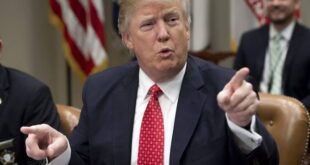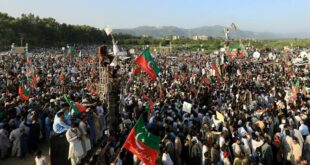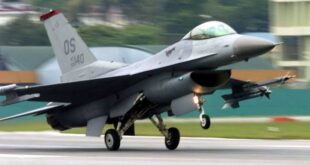By Zahid Rabbani

The fourteenth-century painter Ambrogio Lorenzetti has painted magnificent frescoes entitled Consequences of Good and Bad Government on the walls of the historic city council chamber in Siena, Italy.

Those frescoes show that when bad policy decisions are made death and destruction are everywhere in the city. When the government makes good policy decisions, peace, justice, wisdom, and harmony triumph. With good policy judgments, citizens engage in all forms of productive labor, and abundance prevails.
In the twenty-second year of the twenty-first century, Sri Lanka faced a textbook case of economic and political crisis as a result of a series of incompatible and unsound public policies, unchecked anti-competitive practices, and corruption. Shortages in essential food, medicine, energy, and other industrial inputs are everywhere, while social disharmony prevails.
In early April 2022, Sri Lanka’s Central Bank disclosed quite abruptly that it had run out of foreign reserves. The Central Bank did not warn the public that it was going to run out of reserves, nor did it have any plans to avert the adverse outcomes. The result was the inability to import and supply essential consumption goods such as fuel and medicine and honor foreign debt obligations.
Sri Lanka defaulted on foreign debt and faced the consequence of being downgraded to the default grade by the international rating agencies. The default grade makes it harder to borrow further from financial markets. Meanwhile, the stubbornness of the government and severe economic hardships have led to a political revolt.

Immediate Response: The government is pursuing the only immediate response available to them. That is to use its diplomatic connections and international relations to secure funds to maintain an uninterrupted supply of energy, food, and medicine as it is the prime responsibility of all government institutions involved in policymaking.
The controls on the exchange rate have to be dropped for it to freely float. Initially, there will be over-depreciation. However, it will discourage non-essential imports, and encourage domestic production, exports, tourism, and inward remittances.
The government may request that all individuals give up corruption voluntarily, or severely crack down on it. The new Prime Minister has already warned the country of impending hardships.
It is unavoidable that people have to practice a frugal way of living. At the same time, the government has to look after the poor and vulnerable groups of society. Assistance has to be given immediately, utilizing existing government structures.
It is the responsibility of all political parties to come together to find a solution to ease political agitation by the public. In the end, a set of sound economic policies needs to be implemented after carefully analyzing the causes of this crisis.
Comparison with East Asia and Greece: The East Asian crisis began in 1997 in Thailand. Thailand was maintaining a fixed and overvalued exchange rate. In addition, Thailand had an open capital account where private firms and individuals freely sent or received foreign exchange.
When the exchange rate was unsustainable and had the risk of sudden depreciation, foreign exchange flew out of the country. The government and private sector could not meet their debt obligations. The crisis propagated to several other East Asian countries such as Indonesia, the Philippines, South Korea, Taiwan, Malaysia, and Singapore.
Most of the countries sought assistance from the International Monetary Fund (IMF). As the exchange rate stabilized, and interest rates raised, foreign funds began to flow back. However, even during the worst times, all those countries had international reserves sufficient for more than three months of imports according to data from the World Bank.
The Greek crisis began in 2009 with the government’s inability to honor debt repayments. The exchange rate was not an issue because Greece had adopted the Euro as its currency, the common currency of many European countries.
Greece had a large government expenditure and low tax revenue. Greece had been borrowing from international markets to fill this gap, but accurate accounts of those borrowings had not been maintained.
At a point when the Greek government could not borrow to repay loans, the government had to be bailed out by the IMF and other strong European countries. The recovery was very slow because the economy was weak, government revenue was weak and any changes to government expenditure were not flexible.
Sri Lanka’s crisis is different from the East Asian Crisis but somewhat similar to the Greek crisis. Sri Lanka has a problem of inability to pay government foreign debt, and inability to afford energy imports. However, the availability of energy was not a serious problem in East Asian countries or Greece. The recovery in Sri Lanka would not be easy since the net inflow of foreign exchange has to come from further borrowings and foreign aid.
Causes of the Crisis: Sri Lanka has been living with a series of severe political and economic problems caused by successive governments. The collective errors caused by the government in the recent past were the ‘last straw that broke the camel’s back’.
The already strained public finances had an unbearable negative shock with massive tax cuts initiated by the new government. The government began to lose over Rs. 500 billion annually. The hitherto unseen commitment to fix the exchange rate at Rs. 200 per US dollar decimated the country’s reserves.
In the past, when the reserves came closer to three months of imports, the Central Bank sought help from the IMF.

This time the Central Bank remained taking no action until the last dollar was gone. Furthermore, the country was given shock therapy with the fertilizer policy. These shocks were too much to bear for an economy already compromised by the COVID-19 pandemic.
There are multiple other long-term causes of this crisis. The first and foremost is the misguided monetary policy as well as the wrong exchange rate policy of the Central Bank of Sri Lanka.
The Central Bank has been maintaining a money growth of about 15 percent continuously. Money was finding its way to the hands of the public, increasing their purchasing power. This, coupled with an overvalued exchange rate, increased the demand for imported goods (such as luxury cars further fueled by duty-free permits) and imported services (such as education and travel).
The high demand created a large deficit in the current account of the balance of payments. This was filled with high-cost borrowings from the international commercial debt market. This practice became unsustainable.
Other factors contributing to this crisis were the slow growth of the economy, inefficient public finance management, excessive government expenditure, high real wages, irresponsible debt accumulation, anti-competitive practices, insider trading, deficiencies in human resources running the government, and vulnerability to external shocks.
This note outlines lessons for a new age in Sri Lanka. Failure in Maintaining Economic and Price Stability by the Central Bank: The ignition point of the economic crisis was the incompatibility of monetary policy and exchange rate policy adopted by the Central Bank.
First, Sri Lanka’s historic mistake was the setting up of a central bank by dismantling the currency board in the 1950s. That was done as a proud symbol of economic independence. It allowed the government to print money at their will to satisfy popular needs. More money and few goods have been driving up inflation.
In contrast, Singapore maintained a currency board. They knew that being a small country; they have to depend on international trade as the main driver for the success of their economy. Thus, exchange rate stability was also an important factor. A currency board was best suited to meet both these requirements.
Similarly, Sri Lanka is also a small country that would benefit immensely from international trade, and exchange rate stability. Instead, Sri Lanka chose to set up a central bank with the ability to print money and destabilize the exchange rate by generating high inflation rates.
This historic mistake may not have affected Sri Lanka, if the monetary board running the central bank implemented sound policies to maintain a low rate of inflation, i.e. price stability. A persistent low rate of inflation may have resulted in exchange rate stability, without requiring costly intervention in the foreign exchange market using precious foreign exchange reserves.
Since its inception, the central bank has been running a money growth of about 15 percent. This misguided monetary policy kept the flame of inflation ablaze. After allowing for modest economic growth of about 5 percent, the rest of the money growth becomes inflation of well over 10 percent.
While running high inflation, the monetary board was trying to prevent the depreciation of the rupee using scarce reserves until all reserves were gone. This is similar to using precious water to keep a bucket full while using another sharp tool to make a large hole in the bucket.
When the exchange rate is not allowed to depreciate in line with higher domestic inflation than the inflation in trading partner countries, it leads to an overvaluation of the rupee. Overvaluation has serious economic consequences in both the short run and the long run.
It encourages imports and discourages exports, destroys domestic industries and agriculture, and encourages foreign travel and import of similar services. The more serious consequence is what Sri Lanka is going through now, a painful economic crisis.
The extent of the overvaluation of the rupee can be explained using the concept of ‘real exchange rate’, which is defined as the number of foreign goods that can be bought by exchanging one Sri Lankan good.
If the nominal exchange rate (rupees per US dollar) is allowed to freely float, it either depreciates or appreciates to maintain purchasing power parity. This allows only one foreign good to be exchanged for one Sri Lankan good.
When the nominal exchange rate is overvalued, the real exchange rate also appreciates, meaning one Sri Lankan good is worth more than one foreign good. Thus, instead of buying Sri Lankan goods, Sri Lankans prefer to buy foreign goods, and foreigners prefer to buy their own goods rather than import from Sri Lanka.
In contrast, countries like China maintain an undervalued currency, leading to a depreciated real exchange rate. The undervalued Chinese currency leads to more than one Chinese good being exchanged for one foreign good. Thus, it is cheaper to import goods from China.
The overvalued currency leads to a large deficit in the ‘current account’ of the balance of payments. This deficit needs to be filled with international borrowings raising the country’s debt levels or selling Sri Lanka’s real assets to foreigners. Since this cannot be done forever, it creates a balance of payment crisis eventually.
For example, in 2021, the current account deficit was US Dollars three bn. In addition, the debt repayments were four bn. Thus, in 2021, the central bank had to find US Dollars seven bn to cover the deficit and repay loan installments.
One of the two major objectives of the central bank as mandated by the Monetary Law Act is to maintain economic and price stability. The other is maintaining financial system stability. That did not let the country fall into a financial crisis and maintain inflation at a moderate rate of around two percent. Apparently, the Central Bank has failed in meeting the first objective.
The monetary board running the Central Bank has apparently been making continuous policy mistakes, as they may not have recognized the incompatibility of the monetary policy regime and the exchange rate regime.
When the monetary board fails to recognize the impact of high money growth on inflation, the impact of inflation on the exchange rate, and the incompatibility of fixed exchange rate and independent monetary policy, the country inevitably has to go through a currency crisis first, followed by an economic crisis and eventually a full-scale political crisis.
 Pride News Daily NEWS
Pride News Daily NEWS





